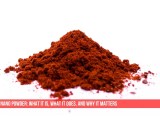
The Ultimate Guide to Nickel Conductive Paste: Composition, Properties, and Applications
September 11, 2025Nickel conductive paste is a composite material formulated to provide reliable electrical conductivity alongside strong mechanical adhesion. Comprising a high-purity nickel particle filler within a polymer or epoxy binder, this material is engineered for applications where soldering is impractical or where cost-effective shielding and circuitry are required. Its excellent oxidation resistance and stability make it a preferred choice for printing electrodes, repairing PCB traces, and creating EMI/RFI shields in both consumer electronics and advanced industrial manufacturing.
What is Nickel Conductive Paste?
Imagine a jar of clear nail polish (the binder) filled with microscopic, ball-bearing-like nickel particles (the filler). When you spread this mixture out and let it dry, the nickel particles come into contact with each other, creating a path for electricity to flow, while the binder holds everything firmly in place.
That’s essentially what nickel conductive paste is: a composite material designed to conduct electricity and act as an adhesive.
What’s In It? The Composition
Nickel paste isn’t magic; it’s a carefully engineered blend of just a few key ingredients:
- Conductive Filler (The Star of the Show): This is what makes it conductive. It consists of tiny, pure nickel particles. These can be:
- Flakes: Thin, flat particles that stack like scales, creating a good conductive path.
- Powders: Spherical particles that pack together.
- Often, a mix of both is used to optimize conductivity and strength.
- Binder/Matrix (The Glue): This is the “paste” part. It’s a non-conductive material that holds the nickel particles together and sticks them to the surface. Common binders include:
- Epoxy: Creates a powerful, durable, and chemical-resistant bond. (Two-part pastes often use epoxy.)
- Polymer Resins: (e.g., acrylic, silicone). These are often used in single-part pastes that cure at room temperature or with a bit of heat.
- Solvents: Used to keep the paste in a liquid, spreadable form. They evaporate during the curing process.
- In a nutshell: The nickel particles make the electricity flow, and the binder paste holds everything together.
Key Properties and Advantages of Nickel Conductive Paste
Why would you choose nickel paste over other options, such as silver or copper?
- Good Electrical Conductivity: While not as conductive as silver (the king of conductivity), nickel offers excellent conductivity for most non-critical applications. It’s miles better than an insulator!
- Cost-Effective: Nickel is significantly cheaper than silver. This makes it the perfect choice for large-scale manufacturing or projects where budget is a concern
- Oxidation Resistance: Unlike copper paste, which corrodes and loses conductivity quickly when exposed to air, nickel is naturally stable and resistant to oxidation. This means its performance stays consistent over time.
- Moderate Thermal Conductivity: It can also transfer heat, making it useful for some basic thermal management jobs, like attaching small heat sinks.
- Strong Mechanical Bond: The epoxy-based pastes can form a powerful physical bond, acting as both an electrical connection and an adhesive.
- Trade-off: The main downside is its higher electrical resistance compared to silver. For high-frequency circuits or applications where every milliohm of resistance counts, silver is a better choice.
Where is it Used? Applications
You might be surprised where this handy paste shows up! Here are some of its most common applications:
Electronics Repair & Prototyping (The “Quick Fix”)
PCB Trace Repair: The classic use! If you scratch or break a thin conductive line on a circuit board, you can carefully “draw” a new line with nickel paste to bridge the gap.
Repairing Heater Elements: Used to fix broken traces on rear-window defrosters in cars or in similar heating pads.
Shielding: Painting or printing a layer onto a plastic case to create an EMI/RFI shield that blocks electromagnetic interference.
Advanced Manufacturing & Engineering
Thick Film Circuits: It’s used to print resistors, capacitors, and interconnects directly onto ceramic substrates for various electronic modules.
Electrode Formation: In creating electrodes for devices like sensors, capacitors, and fuel cells.
Automotive Electronics: Used in various sensors and control modules within cars due to its durability and cost-effectiveness.
DIY and Hobbyist Projects
- Custom Circuits: Creating simple circuits on unconventional materials like paper, plastic, or glass.
- Antenna Repair: Fixing broken elements on small antennas.
- Arts and Crafts: Adding interactive lighting to projects where traditional wiring is complex.
How to Use It: A Quick Guide
- Surface Prep: This is the most crucial step! Surfaces must be clean, dry, and grease-free. Use isopropyl alcohol and a lint-free cloth. Roughing up a smooth surface with sandpaper can help the paste adhere better.
- Application: Use a toothpick, small brush, or syringe to apply a thin layer of paste to connect the areas you need. A little goes a long way.
- Curing: Follow the manufacturer’s instructions!
- Two-Part Epoxies: You mix the resin and hardener, apply, and then wait for it to cure (usually 24 hours at room temp).
- Thermal-Cure Pastes: These require heat. Often, baking at a low temperature (e.g., 100-150°C) for a short time (e.g., 15-30 mins) is needed. A common tool is a heat gun or a controlled oven.
- Test: Once fully cured, use a multimeter to check for conductivity.
Safety Note:
Always work in a well-ventilated area. Wear gloves and safety glasses if possible.
Conclusion
Nickel conductive paste is a wonderfully valuable material that acts as a bridge between the worlds of adhesives and electronics. It’s the affordable, reliable, and versatile choice for a vast range of jobs, from fixing a car defroster to prototyping the next great invention. While it won’t replace a proper solder joint in a high-performance computer, it solves problems that solder can’t, making it an essential tool for every maker and engineer’s toolbox.


